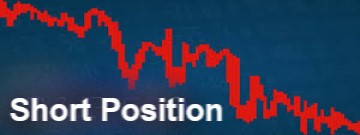
A short position in a stock or other financial instrument is created when a trader first sells a security without owning it. In order to make a profit, the trader intends to repurchase the same security at a later date at a lower price. This is known as covering the position. Short positions can be either naked and covered. A naked short is when a trader sells a security without having possession of it although this practice is illegal in the U.S. for equities. A covered short is when a trader first borrows the stock and then makes a sale. In the futures or foreign exchange markets, short positions can be created at any time.
The person or institution loaning the stock generally charges an on-going fee for this service. In practice, this service is a seemless function performed automatically by the broker who has already identifed stock that is available for bowworing. Naturally, the broker will also receive a cut of the borrowing fee paid. A trader generally decides to short a security for one of two reasons
Speculation
A security is “shorted” and a short position is established if the trader believes the asset price of that security is overvalued and likely to decrease in the near future.
Hedging
The trader is already long a security and wishes to reduce or eliminate a given risk. This can be done be openin a short positoon in a related instrument. An options market maker may have a derivative position and need to short stock to reduce market risk. Alternatively, the trader may be employing a pairs trading or merger arbitrage strategy (see below).
Merger Arbitrage Short Position Example
In merger arbitrage, in order to hedge to value of the offer, the trader must short shares in the acquirer using the exchange ratio. If the offer succeeds, the trader relinquishes his shares in the target and receives payment in stock of the acquirer. These shares will offset the short position. The trader is left with a net stock position of zero in both companies. For a complete example, please refer to our article How to Profit from Merger Arbitrage Trading.
Short Position Risks
Once a short position is established, the trader has a finite potential to earn a profit and infinite potential for losses. Profit potential is limited to the stock’s distance to zero, contrasted against a potentially infinite rise. Although this risk is mitigated if the short position is used as a hedging strategy. A short-squeeze however, where a stock increases rapidly as traders cover their positions, could still prove catastrophic to profitability.
Additional Resources
To get you started, we provide a link to an appropriate list of books on Amazon.
